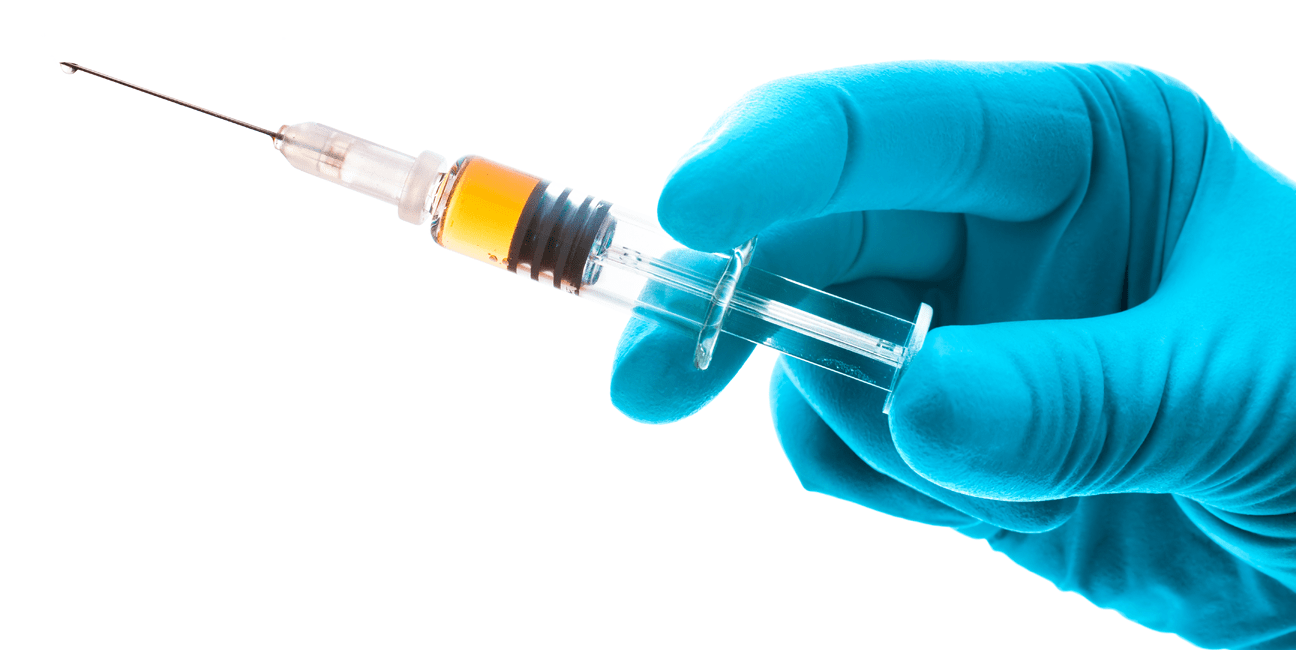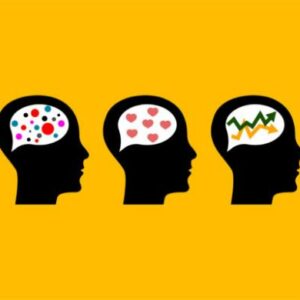
By Sean Adl-Tabatabai / Your News Wire
We have compiled a list of 30 scientific studies that show a link between vaccines and autism, disproving the myth that no official research papers exist to support what alternative doctors have been saying for years.
These papers can be shown to medical doctors and public health officials who wish to see peer reviewed scientific studies to back up the claims that autism is a direct result from receiving a vaccination.
The first research paper presented was the first one ever written on the subject, from 1943. Child Psychiatrist Leo Kanner discovered 11 children over the course of several years who displayed a novel set of neurological symptoms that had never been described in the medical literature, where children were withdrawn, uncommunicative and displayed similar odd behaviors. This disorder would become known as “autism.” In the paper, Dr. Kanner noted that onset of the disorder began following the administration of a small pox vaccine. This paper was published in 1943, and evidence that vaccination causes an ever increasing rate of neurological and immunological regressions, including autism, has been mounting from that time until now.
Autistic Disturbances of Affective Contact
Leo Kanner, Johns Hopkins University, 1943
“Since 1938, there have come to our attention a number of children whose condition differs so markedly and uniquely from anything reported so far, that each case merits – and, I hope, will eventually receive – at detailed consideration of its fascinating peculiarities.”
All of Kanner’s cases were born after, and began to appear following, the introduction of Eli Lilly’s new form of water-soluble mercury in the late 1920s used as an anti-fungal in forestry, a wood treatment product in the lumber industry and as a disinfectant and anti-bacterial in the medical industry under the name of “Thimerosal” that was included in vaccines.
As I testified to at the hearing, there is abundant research supporting the vaccine-autism link. I have included 49 research papers for your review, and only included research published in the last ten years or so. This is by no means a complete list, but it one that I have been compiling for the last few years as relevant research came to my attention. I have ONLY included autism-related information, not research on other vaccine injuries of which there are many.
As you can see, the medical professionals testifying that there is no scientific support for the vaccine/autism causation theory are uninformed about the current state of the science. When vaccination decisions are made based on an uninformed opinion, it means serious potential damage to the patient, and because of the law preventing lawsuits for vaccine injury, it also means that the uninformed medical professionals making bad recommendations CANNOT be held accountable in any way for giving the patient bad information.
Parents want to know if their child can develop autism from their vaccines. If they believe that the answer is yes, and the risk of brain injury from vaccination is higher than their risk from a disease, it is their right to decline vaccination for themselves and their children without coercion.
Patients MUST be able to make their own informed vaccine decisions, because often, they know more about potential vaccine risks that even top public health officials do.
1. Hepatitis B Vaccination of Male Neonates and Autism
Annals of Epidemiology, September 2009
CM Gallagher, MS Goodman, Stony Brook University Medical Center
Boys vaccinated as neonates had threefold greater odds for autism diagnosis compared to boys never vaccinated or vaccinated after the first month of life.
2. Porphyrinuria in childhood autistic disorder: Implications for environmental toxicity
Toxicology and Applied Pharmacology, 2006
Robert Natafa, et al, Laboratoire Philippe Auguste, Paris, France
These data implicate environmental toxicity in childhood autistic disorder.
3. Theoretical aspects of autism: Causes—A review
Journal of Immunotoxicology, January-March 2011
Helen V. Ratajczak, PhD
Autism could result from more than one cause, with different manifestations in different individuals that share common symptoms. Documented causes of autism include genetic mutations and/or deletions, viral infections, and encephalitis following vaccination.
4. Uncoupling of ATP-mediated Calcium Signaling and Dysregulated IL-6 Secretion in Dendritic Cells by Nanomolar Thimerosal
Environmental Health Perspectives, July 2006.
Samuel R. Goth, Ruth A. Chu Jeffrey P. Gregg
This study demonstrates that very low levels of Thimerosal can contribute to immune system dysregulation.
5. Gender-selective toxicity of thimerosal
Exp Toxicol Pathol. 2009 Mar;61(2):133-6. Epub 2008 Sep 3.
Branch DR, Departments of Medicine and Laboratory Medicine and Pathobiology, University of Toronto
A recent report shows a correlation of the historical use of thimerosal in therapeutic immunizations with the subsequent development of autism; however, this association remains controversial. Autism occurs approximately four times more frequently in males compared to females; thus, studies of thimerosal toxicity should take into consideration gender-selective effects. The present study was originally undertaken to determine the maximum tolerated dose (MTD) of thimersosal in male and female CD1 mice. However, during the limited MTD studies, it became apparent that thimerosal has a differential MTD that depends on whether the mouse is male or female.
6. Comparison of Blood and Brain Mercury Levels in Infant monkeys exposed to Vaccines Containing Thimerosal
Environmental Health Perspectives, Aug 2005.
Thomas Burbacher, PhD, University of Washington
This study demonstrates clearly and unequivocally that ethyl mercury, the kind of mercury found in vaccines, not only ends up in the brain but leaves double the amount of inorganic mercury as methyl mercury, the kind of mercury found in fish. This work is groundbreaking because little is known about ethyl mercury, and many health authorities have asserted that the mercury found in vaccines is the “safe kind.” This study also delivers a strong rebuke of the Institute of Medicine’s recommendation in 2004 to no longer pursue the mercury-autism connection.
7. Increases in the number of reactive glia in the visual cortex of Macaca fascicularis following subclinical long-term methyl mercury exposure
Toxicology and Applied Pharmacology, 1994
Charleston JS et al, Department of Pathology, School of Medicine, University of Washington
The identities of the reactive glial cells and the implications for the long-term function and survivability of the neurons due to changes in the glial population following subclinical long-term exposure to mercury are discussed.
8. Neuroglial Activation and Neuroinflammation in the Brain of Patients with Autism
Annals of Neurology, Feb 2005.
Diana L. Vargas, MD [Johns Hopkins University]
This study, performed independently and using a different methodology than Dr. Herbert (see above) reached the same conclusion: the brains of autistic children are suffering from inflammation.
9. Autism: A Brain Disorder, or a Disorder That Affects the Brain?
Clinical Neuropsychiatry, 2005
Martha R. Herbert M.D., Ph.D., Harvard University
Autism is defined behaviorally, as a syndrome of abnormalities involving language, social reciprocity and hyperfocus or reduced behavioral flexibility. It is clearly heterogeneous, and it can be accompanied by unusual talents as well as by impairments, but its underlying biological and genetic basis in unknown. Autism has been modeled as a brain-based, strongly genetic disorder, but emerging findings and hypotheses support a broader model of the condition as a genetically influenced and systemic.
10. Activation of Methionine Synthase by Insulin-like Growth Factor-1 and Dopamine: a Target for Neurodevelopmental Toxins and Thimerosal
Molecular Psychiatry, July 2004.
Richard C. Deth, PhD [Northeastern University]
This study demonstrates how Thimerosal inhibits methylation, a central driver of cellular communication and development.
11. Validation of the Phenomenon of Autistic Regression Using Home Videotapes
Archives of General Psychiatry, 2005
Emily Werner, PhD; Geraldine Dawson, PhD, University of Washington
Conclusion This study validates the existence of early autistic regression.
12. Blood Levels of Mercury Are Related to Diagnosis of Autism: A Reanalysis of an Important Data Set
Journal of Child Neurology, 2007
M. Catherine DeSoto, PhD, Robert T. Hitlan, PhD -Department of Psychology, University of Northern Iowa
Excerpt: “We have reanalyzed the data set originally reported by Ip et al. in 2004 and have found that the original p value was in error and that a significant relation does exist between the blood levels of mercury and diagnosis of an autism spectrum disorder. Moreover, the hair sample analysis results offer some support for the idea that persons with autism may be less efficient and more variable at eliminating mercury from the blood.”
13. Developmental Regression and Mitochondrial Dysfunction in a Child With Autism
Journal of Child Neurology, February 2006
Jon S. Poling, MD, PhD, Department of Neurology and Neurosurgery, Johns Hopkins Hospital
Excerpt: “Children who have (mitochondrial-related) dysfunctional cellular energy metabolism might be more prone to undergo autistic regression between 18 and 30 months of age if they also have infections or immunizations at the same time.”
14. Oxidative Stress in Autism: Elevated Cerebellar 3-nitrotyrosine Levels
American Journal of Biochemistry and Biotechnology, 2008
Elizabeth M. Sajdel-Sulkowska, – Dept of Psychiatry, Harvard Medical School
Excerpt: The preliminary data suggest a need for more extensive studies of oxidative stress, its relationship to the environmental factors and its possible attenuation by antioxidants in autism.”
15. Large Brains in Autism: The Challenge of Pervasive Abnormality
The Neuroscientist, 2005.
Martha Herbert, MD, PhD, Harvard University
This study helps refute the notion that the brains of autistic children are simply wired differently and notes, “neuroinflammation appears to be present in autistic brain tissue from childhood through adulthood.” Dr. Herbert suggests that chronic disease or an external environmental source (like heavy metals) may be causing the inflammation.
16. Evidence of Toxicity, Oxidative Stress, and Neuronal Insult in Autism
Journal of Toxicology and Environmental Health, Nov-Dec 2006.
Janet Kern, Anne Jones, Department of Psychiatry, University of Texas Southwestern Medical Center
“This article discusses the evidence for the case that some children with autism may become autistic from neuronal cell death or brain damage sometime after birth as result of insult; and addresses the hypotheses that toxicity and oxidative stress may be a cause of neuronal insult in autism… the article discusses what may be happening over the course of development and the multiple factors that may interplay and make these children more vulnerable to toxicity, oxidative stress, and neuronal insult.”
17. Oxidative Stress in Autism
Pathophysiology, 2006.
Abha Chauhan, Ved Chauhan
This study provides a helpful overview of the growing evidence supporting the link between oxidative stress and autism.
18. Thimerosal Neurotoxicity is Associated with Glutathione Depletion: Protection with Glutathione Precursors
S. Jill James, PhD, University of Arkansas
This recent study demonstrates that Thimerosal lowers or inhibits the body’s ability to produce Glutathione, an antioxidant and the body’s primary cellular-level defense against mercury.
19. Aluminum adjuvant linked to gulf war illness induces motor neuron death in mice
Neuromolecular Medicine, 2007
Christopher Shaw, Ph.D., Department of Ophthalmology and Program in Neuroscience, University of British Columbia
This study demonstrates the extreme toxicity of the aluminum adjuvant used as a preservative in vaccines.
20. Environmental mercury release, special education rates, and autism disorder: an ecological study of Texas
Health & Place, 2006
Raymond F. Palmer, University of Texas Health Science Center
This study demonstrated the correlation between environmental mercury and autism rates in Texas.
21. Autism Spectrum Disorders in Relation to Distribution of Hazardous Air Pollutants in the SF Bay Area
Environmental Health Perspectives, September, 2006
Gayle Windham, Div. of Environmental and Occupational Disease Control, California Department of Health Services
Excerpt: “Our results suggest a potential association between autism and estimated metal concentrations, and possibly solvents, in ambient air around the birth residence.”
22. A Case Series of Children with Apparent Mercury Toxic Encephalopathies Manifesting with Clinical Symptoms of Regressive Autistic Disorder
Journal of Toxicology and Environmental Health, 2007
David A. Geier, Mark R. Geier
This study reviewed the case histories and medical profiles of nine autistic children and concluded that eight of the nine children were mercury toxic and this toxicity manifested itself in a manner consistent with Autism Spectrum Disorders.
23. Attention-deficit hyperactivity disorder and blood mercury level: a case-control study in chinese children
Neuropediatrics, August 2006 – P.R. Kong
Excerpt: “There was significant difference in blood mercury levels between cases and controls, which persists after adjustment for age, gender and parental occupational status. The geometric mean blood mercury level was also significantly higher in children with inattentive and combined subtypes of ADHD. High blood mercury level was associated with ADHD. Whether the relationship is causal requires further studies.”
24. The Changing Prevalence of Autism In California
Journal of Autism and Developmental Disorders, April 2003
Mark F. Blaxill, David S. Baskin, and Walter O. Spitzer
This study helps to refute the supposition made by some researchers that autism’s epidemic may only be due to “diagnostic substitution”.
25. Mitochondrial Energy-Deficient Endophenotype in Autism
American Journal of Biochemistry and Biotechnology 2008
J. Jay Gargus and Faiqa Imtiaz, School of Medicine, University of California, Irvine,
While evidence points to a multigenic etiology of most autism, the pathophysiology of the disorder has yet to be defined and the underlying genes and biochemical pathways they subserve remain unknown.
26. Bridging from Cells to Cognition in Autism Pathophysiology: Biological Pathways to Defective Brain Function and Plasticity
American Journal of Biochemistry and Biotechnology 2008
Matthew P. Anderson, Brian S. Hooker and Martha R. Herbert, Cambridge Health Alliance/Harvard Medical School/Beth Israel Deaconess Medical Center
We review evidence to support a model where the disease process underlying autism may begin when an in utero or early postnatal environmental, infectious, seizure, or autoimmune insult triggers an immune response that increases reactive oxygen species (ROS) production in the brain that leads to DNA damage (nuclear and mitochondrial) and metabolic enzyme blockade and that these inflammatory and oxidative stressors persist beyond early development (with potential further exacerbations), producing ongoing functional consequences.
27. Heavy-Metal Toxicity—With Emphasis on Mercury
John Neustadt, ND, and Steve Pieczenik, MD, PhD
Conclusion: Metals are ubiquitous in our environment, and exposure to them is inevitable. However, not all people accumulate toxic levels of metals or exhibit symptoms of metal toxicity, suggesting that genetics play a role in their potential to damage health.
28. Evidence of Mitochondrial Dysfunction in Autism and Implications for Treatment
American Journal of Biochemistry and Biotechnology
Daniel A. Rossignol, J. Jeffrey Bradstreet
MtD and oxidative stress may also explain the high male-to-female ratio found in autism due to increased male vulnerability to these dysfunctions.
29. Proximity to point sources of environmental mercury release as a predictor of autism prevalence
Health & Place, 2008
Raymond F. Palmer et al, University of Texas Health Science Center
This study should be viewed as hypothesis-generating – a first step in examining the potential role of environmental mercury and childhood developmental disorders. Nothing is known about specific exposure routes, dosage, timing, and individual susceptibility. We suspect that persistent low-dose exposures to various environmental toxicants, including mercury, that occur during critical windows of neural development among genetically susceptible children (with a diminished capacity for metabolizing accumulated toxicants) may increase the risk for developmental disorders such as autism.
30. Epidemiology of autism spectrum disorder in Portugal: prevalence, clinical characterization, and medical conditions
Developmental Medicine & Child Neurology, 2007
Guiomar Oliveira MD PhD et al, Centro de Desenvolvimento da Criança, Hospital Pediátrico de Coimbra; Assunção Ataíde BSc, Direcção Regional de Educação do Centro Coimbra;
The objective of this study was to estimate the prevalence of autistic spectrum disorder (ASD) and identify its clinical characterization, and medical conditions in a pediatric population in Portugal.
Source: Facebook
What are your thoughts? Please comment below and share this news!


